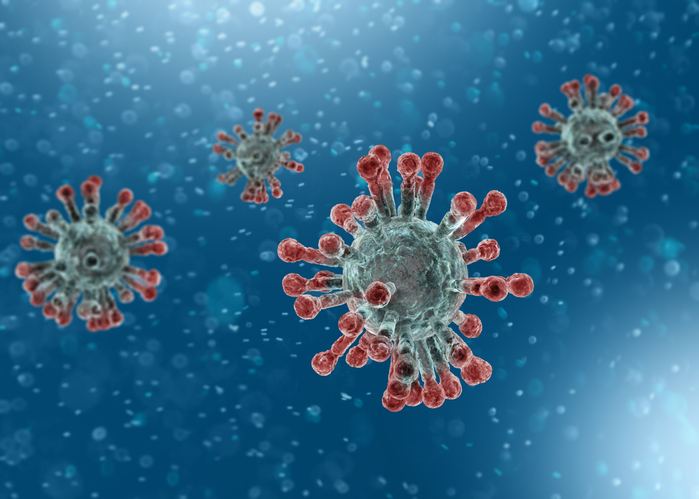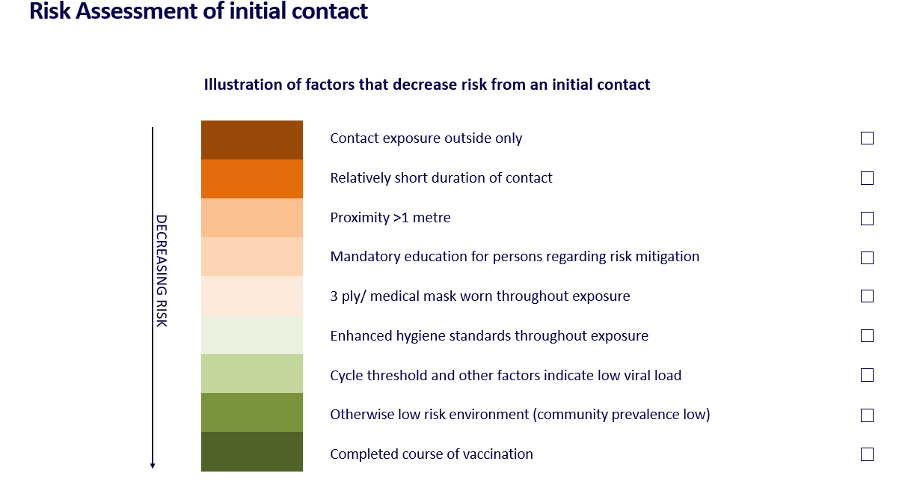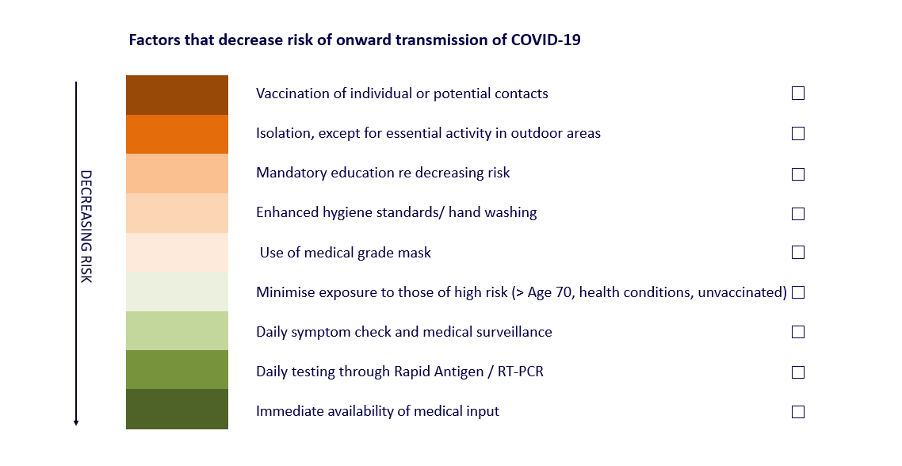Public health and social measures to control the transmission of SARS-CoV-2 advocated by the World Health Organisation (WHO), implemented by national authorities and followed by individuals, have helped decrease the incidence of cases and death from COVID-19. Scientists and policymakers have worked closely together to
- better understand the SARS-CoV-2 virus,
- assess risks associated with SARS-CoV-2,
- and put in place frameworks of mitigation measures that could decrease risk to an acceptable level.

A collaborative approach regarding sporting events
Regarding community sport, governments and the WHO1 continue to advocate for the longevity, physical and mental health benefits physical activity and sport can bring2, with growing evidence regarding benefits on immune function3. While the benefits are compelling, an assessment of risks (including the prevalence, genotype, and phenotype of the virus in the community, ability to modify events and activities, possibility to implement mitigation measures, etc.) may help determine whether risks outweigh benefits4.
Elite and professional sport often bring additional travel concerns and frequently have abundant human and budgetary resources to assess and regularly monitor the risk and put comprehensive COVID-19 mitigation measures in place. They can return risk to5, or below baseline population levels even with international travel6. Collaborative work has seen a return to training and competition in most countries, and in some, a return to cross-border competition and/or spectator attendance.
Risk assessment and mitigation measures
Risk assessment is a dynamic process, with the level of community transmission, vaccination coverage, and available infrastructure to support holding safe sporting events varying widely. International guidance and tools have been developed with examples including:
- WHO Key Planning Recommendations for Mass Gatherings;7
- WHO Considerations for sports federations/sports event organizers when planning mass gatherings in the context of COVID-19;8
- WHO Mass Gathering Sporting Risk Assessment Tool;9
In addition to the scientific underpinning, decisions regarding proceeding with the event itself and attendance by spectators are informed by broader societal and political factors.
Further utility for a risk assessment and mitigation measures approach
COVID-19 risk is not expected to revert to zero in 2021 or for many years. Risk assessment and application of mitigation / preventive measures to decrease risk to a baseline or acceptable level have largely succeeded in elite/ professional sport in 2020 and the early part of 20214,5. This nuanced approach can be broadened to support safe and spectacular sporting events in 2021 while not negatively impacting wider public health.
Contact tracing
Contact tracing (identifying individuals who have been in contact with persons infected with SARS-CoV-2 and taking appropriate action), along with robust testing, isolation, and proper care of cases, is a crucial strategy for interrupting chains of transmission of SARS-CoV-2 and reducing COVID-19-associated mortality10. Given an increased knowledge of factors related to virus transmission,11 there may be instances where individuals who meet the criteria of a close contact could participate in the sporting event if the risk of onward transmission to the public and other participants is very low, and the event Medical Director and the host public health authority agree it reasonable. A risk assessment and regular testing approach to contact tracing has been modelled12, and used in education, health, and piloted in other settings13. This risk assessment is important as sometimes the number of contacts from international travel may be quite large. This is particularly likely for international sporting competition, where contact tracing from airplanes may compromise the integrity of these events.
It is important to think of how the virus spreads (modes of transmission), and when and where it transmits. For this, we need to look at the context, the proximity and duration of contact, and mitigating and aggravating factors. This would depend on factors related to a) the initial “contact” exposure b) the risk of onward transmission. By thinking this way, we can identify ways to minimise our risks.

Figure 1. Risk Assessment of Initial Contact.
Risk of onward transmission can relate to i) the impact and ii) the likelihood of transmission. Impact of transmission may include a SARS-CoV-2 case being in contact with vulnerable or at high-risk individuals or groups. Examples include unvaccinated persons >65years old or with underlying severe health conditions or potentially introducing a virus variant to a host population that is more rapidly transmissible or may have a degree of vaccine escape.
UK government-funded modelling12 and pilot work13 suggest a daily testing regime instead of isolation may not significantly increase transmission risk in contacts, while a risk assessment, daily testing and minimised risk environment approach have been practical and feasible in professional golf14. The default position is to isolate the case in line with broader public health policies and guidelines. Deviation from this (for example, allowing to participate with daily testing and isolation other than when practicing / competing) must be agreed with the host public health authorities with risk assessment and suitable risk reduction measures applied, for example, those in Figure 2. Our professional experience is that these can be safely used to permit sporting competition without risking public health, if correctly applied.

Figure 2. Factors that may decrease risk of onward transmission of SARS-CoV-2 from contacts of confirmed cases
Conclusion
The resumption of sport during the COVID-19 pandemic has been achieved through strong cross-disciplinary and inter-sectoral collaboration, applied risk-based assessment, and putting in place evidence-based mitigation measures to decrease the risk of virus transmission associated with sporting events.
Recognising the social and economic benefits of professional sport and the human and financial resources available to ensure strong risk minimisation strategies can be implemented, a Risk Assessment, Daily Screening/ Testing and Risk Minimisation approach to contact tracing can be appropriate. This has been shown to be practical, feasible, and generally well accepted in preliminary work, and can be further piloted and, if successful applied, in sporting settings where medical support and oversight is present.
References
- World Health Organisation. Ensuring Sport for all. World Health Organisation, 2021. Accessed 21/4/2021 https://www.who.int/activities/ensuring-sports-for-all
- Lee IM, Shiroma EJ, Lobelo F. et al., Effect of physical inactivity on major non-communicable diseases worldwide: an analysis of burden of disease and life expectancy. The Lancet. 2012 Jul 21;380(9838):219-29.
- Chastin S, Abaraogu U, Bourgois J, et al.Effects of Regular Physical Activity on the Immune System, Vaccination and Risk of Community-Acquired Infectious Disease in the General Population: Systematic Review and Meta-Analysis. Sports Med (2021). https://doi.org/10.1007/s40279-021-01466-1
- World Health Organisation. Considerations for mass gatherings in the context of COVID-19: annex: considerations in adjusting public health and social measures in the context of COVID-19 (who.int). World Health Organisation. 2015.
- Schumacher YO, Tabben M, Hassoun K, et al. Resuming professional football (soccer) during the COVID-19 pandemic in a country with high infection rates: a prospective cohort study. British Journal of Sports Medicine Published Online First: 15 February 2021. doi: 10.1136/bjsports-2020-103724
- Robinson P, Murray A, Close G et al. Assessing the risk of SARS-CoV-2 transmission in international professional golf. BMJ Open SEM. 2021 (online)
- World Health Organisation. Key planning recommendations for Mass Gatherings in the context of COVID-19: https://www.who.int/publications-detail/key-planning-recommendations-for-mass-gatherings-in-the-context-of-the-current-covid-19-outbreak
- World Health Organisation. Considerations for sports federations/sports event organizers when planning mass gatherings in the context of COVID-19. April 14, 2020 https://apps.who.int/iris/bitstream/handle/10665/331764/WHO-2019-nCoV-Mass_Gatherings_Sports-2020.1-eng.pdf
- Mass Gathering Sporting Risk Assessment. https://www.who.int/emergencies/diseases/novel-coronavirus-2019/technical-guidance/points-of-entry-and-mass-gatherings
- World Health Organisation. Contact tracing in the context of COVID-19. Interim guidance Feb 2021. World Health Organisation. 2021.Contact tracing in the context of COVID-19 (who.int)
- Koh WC et al. (2020) “What do we know about SARS-CoV-2 transmission? A systematic review and meta-analysis of the secondary attack rate and associated risk factors”. PLoS ONE 15(10): e0240205. (https://doi.org/10.1371/journal.pone.0240205).
- Quilty BJ, Clifford S, Hellewell J, et al. Quarantine and testing strategies in contact tracing for SARS-CoV-2: a modelling study. The Lancet Public Health. 2021 Mar 1;6(3):e175-83.
- Love D, Ready D, Turner C et al. The acceptability of testing contacts of confirmed COVID-19 cases using serial, self-administered lateral flow devices as an alternative to self-isolation. MedRxiv. PrePrint. 26/3/2021
Authors and Affiliations:
AD Murray1,2, A Massey3, B.M. Pluim4,5, J Calder6,7, E Falvey8
- Edinburgh Sports Medicine Research Group, Edinburgh, UK
- Medical and Scientific Department. European Tour Golf, Wentworth Drive, Virginia Water, UK
- Medical Department. Fédération Internationale de Football Association (FIFA), Zurich, Switzerland
- Medical Department. Royal Netherlands Lawn Tennis Association, Amstelveen, the Netherlands.
- Section Sports Medicine, Faculty of Health Sciences, University of Pretoria, Pretoria, South Africa.
- Fortius Clinic, London, UK
- Department of Bioengineering, Imperial College London, UK
- Medical Department. World Rugby. Dublin. Ireland.
Acknowledgements
We wish to acknowledge input received from colleagues from the International Chief Medical Officer in Sport group, and the World Health Organisation Mass Gathering team.